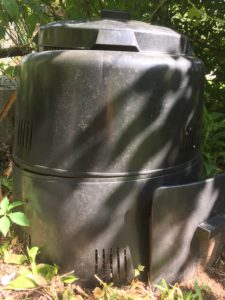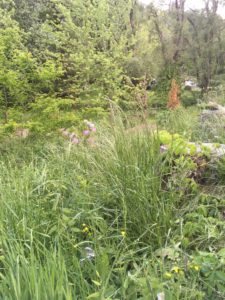Pet Safety in the Garden
go.ncsu.edu/readext?603542
en Español / em Português
El inglés es el idioma de control de esta página. En la medida en que haya algún conflicto entre la traducción al inglés y la traducción, el inglés prevalece.
Al hacer clic en el enlace de traducción se activa un servicio de traducción gratuito para convertir la página al español. Al igual que con cualquier traducción por Internet, la conversión no es sensible al contexto y puede que no traduzca el texto en su significado original. NC State Extension no garantiza la exactitud del texto traducido. Por favor, tenga en cuenta que algunas aplicaciones y/o servicios pueden no funcionar como se espera cuando se traducen.
Português
Inglês é o idioma de controle desta página. Na medida que haja algum conflito entre o texto original em Inglês e a tradução, o Inglês prevalece.
Ao clicar no link de tradução, um serviço gratuito de tradução será ativado para converter a página para o Português. Como em qualquer tradução pela internet, a conversão não é sensivel ao contexto e pode não ocorrer a tradução para o significado orginal. O serviço de Extensão da Carolina do Norte (NC State Extension) não garante a exatidão do texto traduzido. Por favor, observe que algumas funções ou serviços podem não funcionar como esperado após a tradução.
English
English is the controlling language of this page. To the extent there is any conflict between the English text and the translation, English controls.
Clicking on the translation link activates a free translation service to convert the page to Spanish. As with any Internet translation, the conversion is not context-sensitive and may not translate the text to its original meaning. NC State Extension does not guarantee the accuracy of the translated text. Please note that some applications and/or services may not function as expected when translated.
Collapse ▲Many of us who are fortunate to have a home garden also have a furry companion or two that share that garden space with us. As we manage our lawns and gardens and other household areas, it is important to consider where dogs or cats may come into contact with dangerous substances or situations.
Secure your compost so pets cannot get into it. Compost may contain food scraps that are not healthy for your pet, such as onions, garlic, or citrus. In addition, a mold toxic to dogs can form in compost. When ingested, this can cause a life-threatening reaction. All you need is a physical barrier that prevents your animals from snagging snacks. Purchase a compost bin or tumbler, or build a 3 or 4-bay composting station with panels surrounding all edges.
Snakes are also a threat, given the possibility of snake bites. Snakes are more likely to be present in areas with overgrown brush, or around wood piles. Keep your animal out of these areas when possible, and avoid allowing areas to become overgrown if they are frequently visited by your pets.
Adopt an integrated pest management approach to managing insects, weeds, and diseases in your garden. Integrated pest management emphasizes using recommended cultural practices to promote healthy plants, resulting in reduced need for pesticides in the lawn and garden. An example of this might be planting an azalea bush in a partially shaded site rather than one that gets full-sun. When azaleas are placed in full sun they are prone to infestation with lacebugs. Once infested, treatment with insecticide is usually warranted to control the problem.
If you do use pesticides, thoroughly read the pesticide label before use, paying special attention to the signal word, reentry intervals, and harvest intervals. The signal word- caution, warning, or danger- represents the product toxicity to mammals, including humans, cats, dogs, horses, goats, sheep, and cattle. A pesticide with the signal word of danger can be lethal to a 160 lb human in a dose of a few drops to one teaspoon. Pets can be more susceptible to exposure in the garden as do not have protection with shoes or clothing, nor do they have the benefit of knowing when a pesticide has been applied. If you do treat with a pesticide, temporarily cover or remove outdoor pet water or feed bowls as they could be contaminated with pesticide drift during application. Keep animals out of the treated area according to the reentry interval indicated on the label. This may mean erecting a temporary fence to keep an animal out. If you treat your lawn with a pesticide, you may need to invite your pet to play use the restroom in an alternate location until it is safe for them to be on the lawn again. If you are using baits for rodent control, block pet access to the baits with physical barriers.
Many fertilizers are not harmful to animals unless mixed with herbicide or pesticide. However, some contain ammonium nitrate, which irritates the digestive tract if consumed. An animal can ingest fertilizer by rolling in or simply visiting a treated area, picking up fertilizer on their coat, and licking it off during cleaning. If you apply fertilizer, keep an animal away from the area until after a rainfall event or until you have watered in the fertilizer. If you use animal by-products such as bloodmeal or animal manure as fertilizer, it is best to incorporate them into the soil. This helps you maximize the fertilizer value of the product, and it will reduce the attraction to those products among pets. Using composted animal manure instead of raw will also reduce the odor, which will further reduce the interest.
Store pesticides, fertilizers, and garden tools in a way that prevents animal access to them. A shed whose door cannot be opened by a pet is ideal. Always close pesticide containers securely and designate a place that pets cannot access for mixing pesticides. Similarly, never leave open containers of paint, oil, antifreeze, or other toxic substances in an area that pets may visit.
It is important to be familiar with warning signs that an animal and observe your pet on a regular basis. Some warning signs caused by ingesting a toxin are tremors, lack of appetite, lethargy, and lack of coordination. Maintain a working relationship with a veterinary practice and become familiar with any emergency veterinary clinics in your area.
Some of our common landscape plants such as azalea, rhododendrons, and daffodils, are toxic to pets. However, many pets do not bother these plants so they are not an issue. Thorny plants can also cause scratches or scrapes when pets visit them. Consider having alternative plants for pets to nibble on or brush up against if that is something they enjoy. For cats, good plants to have around are lemongrass and catnip. For dogs, fruits and vegetables that are safe for dogs can provide a snack.
Pets can also do their share of damage to your yard. ‘Petscaping’ is the concept of designing your yard or landscape to suit both human interests, such as pleasing appearance, as well as pet interest, such as plants that are good for them and areas where they can enjoy digging holes. For more information on integrated pest management or gardening, contact the N.C. Cooperative Extension, Caldwell County Center at 828-757-1290. Our office is open 8 a.m.–5 p.m., Monday–Friday.






